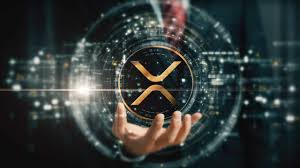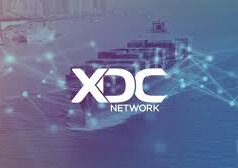The XRP Ledger (XRPL), often just called the XRP blockchain, is one of the most intriguing pieces of tech in the crypto world. Launched in 2012 by developers David Schwartz, Jed McCaleb, and Arthur Britto, it’s a decentralized, open-source blockchain designed to make cross-border payments faster, cheaper, and more efficient than traditional financial systems. Unlike Bitcoin, which focuses on peer-to-peer transactions, or Ethereum, known for its smart contract capabilities, XRPL is laser-focused on enterprise-grade solutions, particularly for financial institutions. With its native cryptocurrency, XRP, the ledger has carved out a unique niche, powering everything from remittances to tokenized assets. Let’s explore what makes the XRP Ledger tick, its standout features, and why it’s still a big deal in 2025.
A Blockchain Built for Speed and Scale
Imagine sending money across the globe in seconds, not days, for a fraction of a penny. That’s the promise of the XRP Ledger. Unlike Bitcoin, which can take 10 minutes or more to confirm a transaction, XRPL processes payments in 3 to 5 seconds, handling up to 1,500 transactions per second. This speed and scalability come from its unique consensus protocol, which doesn’t rely on energy-intensive mining like Bitcoin. Instead, validators—trusted nodes run by companies, developers, or individuals—agree on transaction validity, making the process lightweight and eco-friendly. In fact, XRPL is often touted as one of the greenest blockchains, a big draw for sustainability-conscious developers.
The ledger’s low transaction fees, often less than a cent, are another game-changer. Every XRP fee is burned, reducing the total supply over time, which some analysts believe could drive long-term value. This efficiency has attracted major players like Santander, Standard Chartered, and Travelex Bank, who use Ripple’s technology (built on XRPL) for cross-border payments. The ledger’s built-in decentralized exchange (DEX) also lets users trade assets directly, from XRP to tokenized currencies, without intermediaries, making it a versatile tool for financial innovation.
Recent Innovations Driving Growth
The XRP Ledger isn’t standing still. In 2025, it’s making waves with new features like smart contract functionality via the Hooks amendment. These lightweight WebAssembly modules let developers add programmable logic to the blockchain, opening the door to DeFi applications and liquidity provision. A public testnet for Hooks has been live, allowing coders to experiment without risking real funds. This move brings XRPL closer to competing with Ethereum’s smart contract dominance while keeping its signature speed and low costs.
Another big development is the launch of RLUSD, Ripple’s stablecoin, issued on the XRPL. Pegged to the U.S. dollar, RLUSD aims to simplify cross-border payments by offering stability alongside XRP’s speed. Posts on X have highlighted its potential to replace traditional systems like SWIFT, with Ripple’s partnerships signaling growing institutional adoption. The ledger also supports tokenization and NFTs, letting developers create solutions for micropayments, asset tokenization, and even digital art—use cases that are expanding XRPL’s reach beyond finance.
Navigating Regulatory Waters
The XRP Ledger’s journey hasn’t been without bumps. Ripple, the company behind XRPL, has been locked in a legal battle with the U.S. Securities and Exchange Commission (SEC) since 2020, accused of selling XRP as an unregistered security. A 2023 ruling gave Ripple a partial win, stating that XRP sales to retail investors weren’t securities, but institutional sales were. In August 2024, Ripple faced a $125 million fine—far less than the SEC’s $2 billion demand—boosting XRP’s price. Recent developments, including a July 2025 SEC closed meeting, suggest a possible settlement, with former SEC attorneys hinting at a resolution under new leadership. This clarity has fueled optimism, with XRP hitting a seven-year high of $3.40 in January 2025, driven by regulatory hope and meme coin trading on the network.
Why XRPL Resonates Today
The XRP Ledger’s appeal lies in its real-world utility. Its partnerships with global banks and focus on cross-border payments make it a practical choice for institutions, while its open-source nature invites developers to build innovative apps. The ledger’s 10+ years of uninterrupted performance, with over 63 million ledgers processed, proves its reliability. Plus, its community-driven ethos—open to anyone to build on—keeps it evolving. X users like @Ripple have hyped RLUSD’s potential to lower fees and boost access, while @Xfinancebull celebrated XRP’s inclusion in a Bitwise ETF, signaling Wall Street’s growing interest.
Challenges and Opportunities Ahead
Despite its strengths, XRPL faces challenges. The SEC lawsuit, while nearing resolution, has cast a shadow, and some X users, like @maxkeiser , argue Ripple’s token distribution practices have hurt retail investors. Volatility remains a risk—XRP’s price, around $2.97 as of August 5, 2025, is down 2.54% in 24 hours but up 300% over the past year. Analysts predict a 2025 range of $2.80 to $5, driven by ETF momentum and institutional adoption, but nothing’s guaranteed in crypto.
For traders and developers, XRPL offers a compelling mix of speed, affordability, and innovation. Whether you’re eyeing its DeFi potential or betting on its stablecoin play, the XRP Ledger is a blockchain to watch. Just do your research, stay updated via Ripple’s official channels, and tread carefully in this fast-moving market.
Sources:
- XRPL.org: XRP Ledger Home
- CoinMarketCap: XRP Price Today
- The Crypto Basic: XRP News Today
- Caleb & Brown: What is XRP (Ripple)?
- FXEmpire: XRP News Today
- X Post by @Ripple: RLUSD Stablecoin Announcement
- X Post by @Xfinancebull: Bitwise ETF Inclusion




























XRP Ledger’s reliance on a small number of validators makes it less decentralized than other blockchains. But it’s still easy to use
Lost some money due to memo issue. Not using it ever again